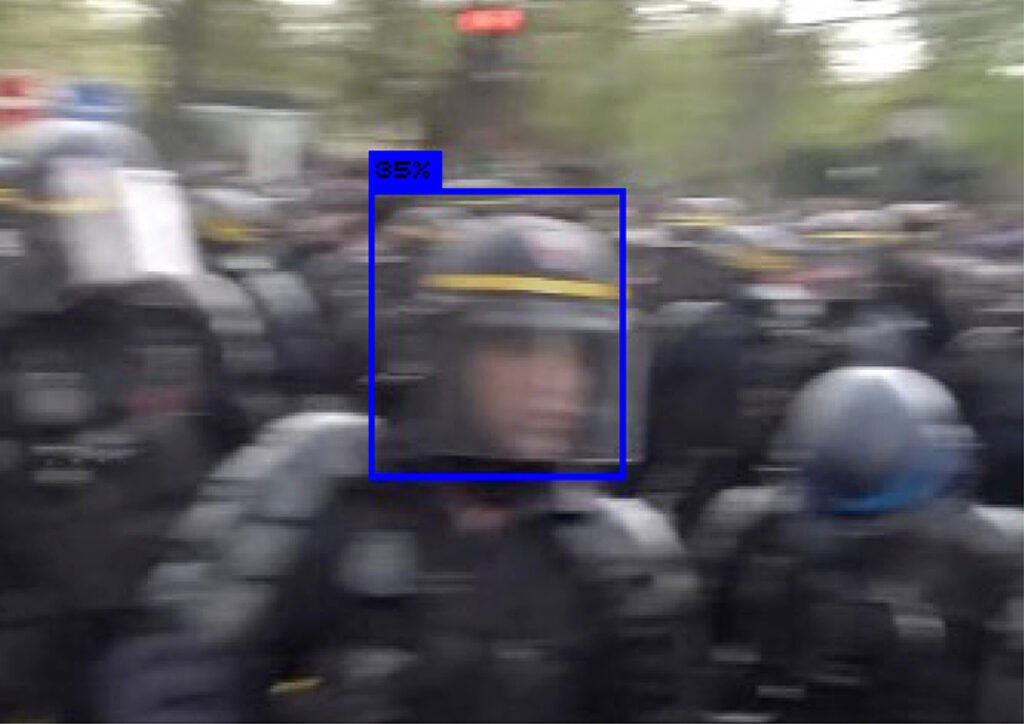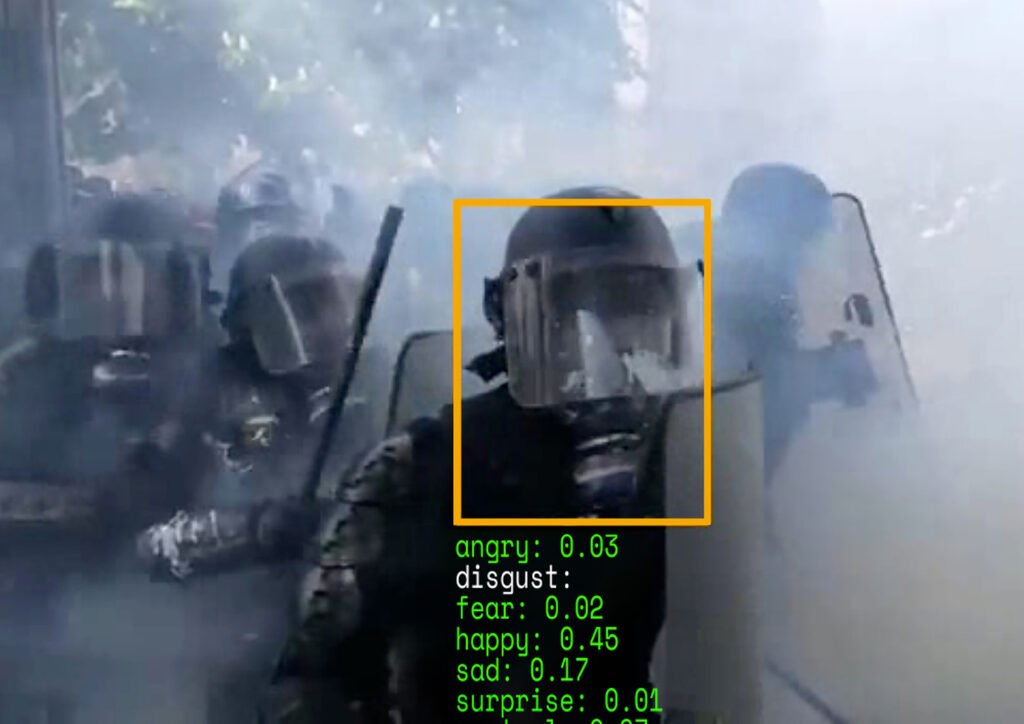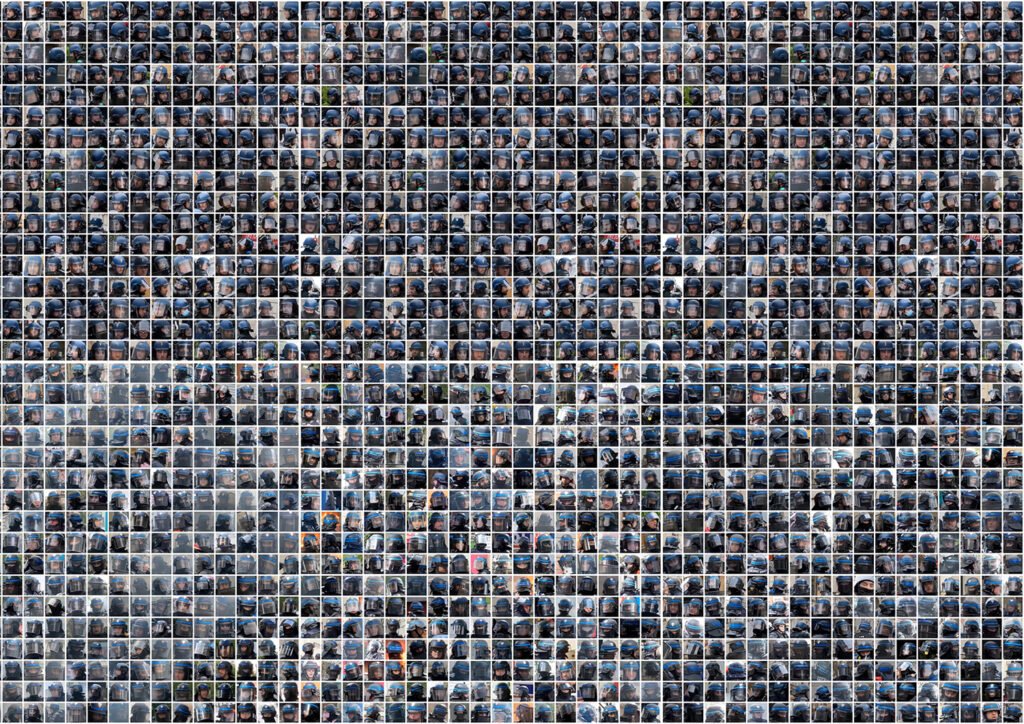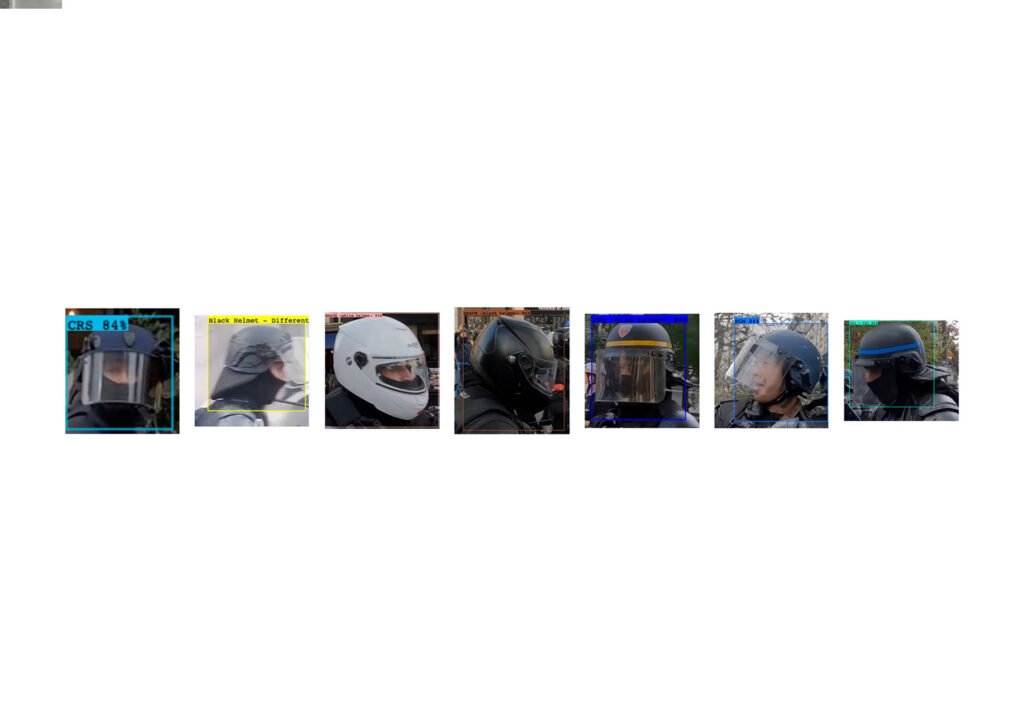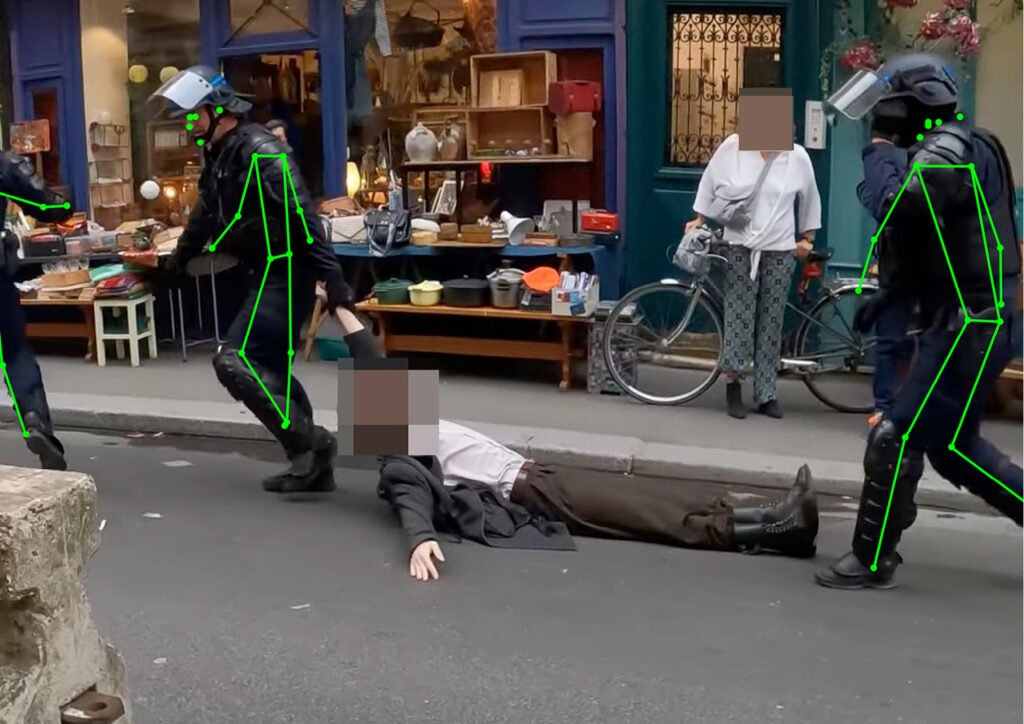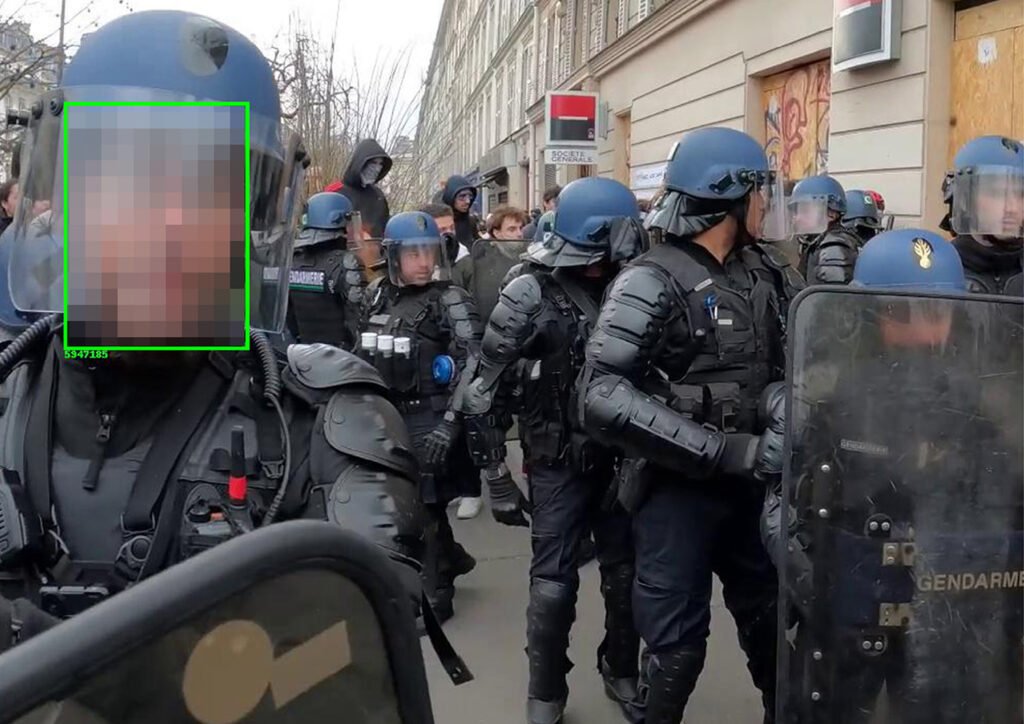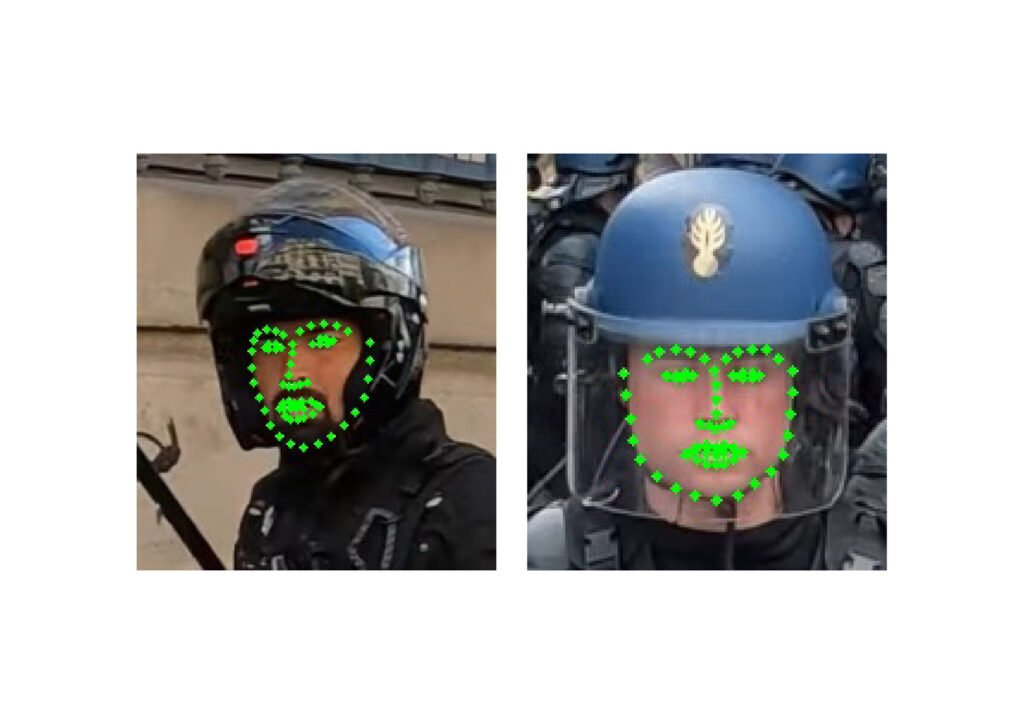In January 2023, the French government passed a bill allowing the use of algorithmic video surveillance (AVS) as a legal crowd-controlling measure for any gathering of more than 300 people. This technology is put in place to automate the process of detecting crime, as it is able to capture features that are missable to the human eye. Artificial intelligence decides who is a suspect and who isn’t. Emotion recognition is similar to facial recognition, but instead of focusing on identity recognition, its aim is to decode the person’s inner emotional state. In this case, the artificial intelligence is trained to detect, analyze and decode human behavioural patterns associated with emotions. Starting from a 3 hour long live stream of a recent French protest, the artist uses the software “Video Content Analysis” to analyze the crowd and discern over 30 000 people’s faces.
With the use of an AI trained to recognise 7 facial expression associated with determined emotions the artist categorises the protestors based on the emotional state they were assigned by the artificial intelligence. This process allows him to visualise how the AI interprets a protest.
There is currently no record of emotion recognition being used in decisions affecting protestors. However, this technology has been widely used by companies to monitor their employees.
The continuously evolving nature of surveillance technologies, combined with the normalization derived by the ease with which these technologies are introduced on a legislative level, poses a threat to the right of assembly, protest, and speech. This becomes extremely threatening when the technology is given the task to decode something of human nature, and used to make decisions based on probability rather than events.
Marcel Top (b. 1997, BE) is a visual artist living and working between Belgium and London. Top has recently exhibited work in occasion of .tiff at FoMu (BE), Fotofestiwal (PL), La Mediatine (BE), Utopias Photofestival Lahti (FI), Der Greif 15th anniversary past and present (DE), Openwalls Arles at Gallerie Huit (FR), Archipel_0 at Contretype (BE), 3865Km to the West Mechelen (BE), PhEST (IT), PhMuseumdays (IT) and Photo OpenUp (IT),. His works are part of the collections of the University of the Arts London and the Institut pour la photographie Lille. He was awarded the Prix Mediatine (2024), Folio #3 at the Institut pour la Photographie (2023), PhMuseum Grant, exhibition (2022), SOFAM price (2019). His work has been showcased in publications such as the British Journal of Photography, Phroom, PhMuseum, Zone Magazine and.tiff. After studying photography at Narafi (Brussels), Marcel Top went on to take a master in photojournalism and documentary photography at the London College of Communication.
Top researches the topics of mass surveillance, privacy, data collection.In his practice, he layers a traditional approach to documentary research with a more experimental use of new technologies (such as facial recognition, movement analysis, and deepfakes). The artist uses these technologies to visualise and examine scenarios in which people can protect themselves and their rights by gaining knowledge and reclaiming control of surveillance tools.
Top’s projects addressing human rights, police misconduct and facial recognition during protests aim to contrast the abstract nature of the algorithmic mechanisms behind mass surveillance, by providing a concrete visualisation of the phenomenon and confronting the public with the extensive amount of surveillance societies are subjected to and the ethical risks deriving, finally offering theoretical solutions.
